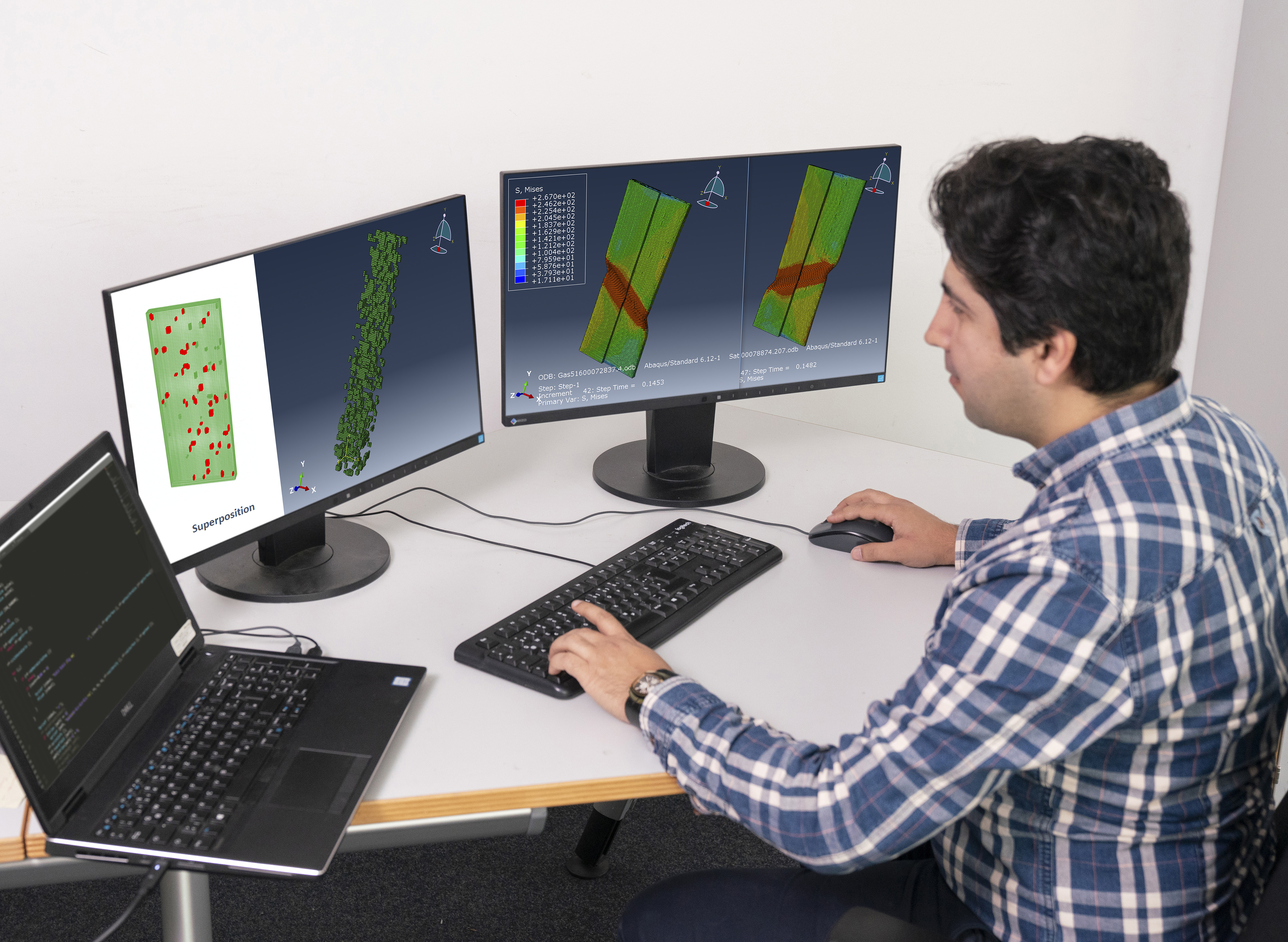Modelling of statistical influences of microdefects for a reliable production of casting components

A major challenge for the design and reliability of cast components is the scattering of mechanical characteristics. Microdefects, which occur during the casting process, determine the quality of the casting. Development of these defects is a random process. Within the framework of an AiF project, the Fraunhofer Institutes IFAM and IWM have developed a methodology to model these stochastic influences on the failure behavior of castings. The simulation can be used to calculate local material properties, identify weaknesses in a design and thus optimize the production process in a systematic way. For foundries, this means significant savings in costs.
The scatter of local characteristics in a cast component is determined by the spatial variation of microstructure as well as the proportion and morphology of defects such as gas and shrinkage porosity, which in turn are influenced by casting processes and component geometries. Representation of these stochastic aspects of the failure behavior of casting components in the simulation of their mechanical behavior has not been available so far. Existing commercial software for numerical simulation of casting processes which rely on physical models for mold filling and solidification, only provide general, integral information about defect types such as gas and shrinkage porosity. For other defect types, only probabilities of their occurrence are usually given. No information about the scattering of component properties can be derived from these data, as these are influenced by the bandwidth of possible characteristics of the defect distribution.
Stochastic analysis using finite element simulation
In order to be able to estimate the dispersion of the mechanical properties of cast components, a stochastic model was developed which describes the local distribution of defect types gas porosity and shrinkage porosity via the so-called random fields. By means of this analysis, the statistical variability of the most important defect characteristics for casting process and material can be recorded and mapped on FEM models. These build the basis of a test setup, which evaluates the effects of random distributions for a pore size and morphology specified by the user in simulated mechanical tests.
In the first step, typical features of microdefects are identified by means of computer tomography, metallographic analyses or casting simulations. This involves computing the volume fraction of defects, the mean equivalent diameter idem and shape parameters such as sphericity and compactness, supplemented by an evaluation of size effects. The software then generates different configurations of stochastic defect distributions, each of which satisfies the above-mentioned criteria. Using a superposition approach, the interaction of different classes of local defects is integrated. Different simulations are then carried out for the distributions concerned. They will be then analysed with regard to the mechanical properties obtained under the influence of defects. The statistical evaluation of an appropriate number of distributions provides a statement about the expected scattering range of the properties. Pore distributions can be generated detached from the component as representative volume elements or within specific casting regions. In the latter case, virtual component tests are also possible.
Development is worthwhile for foundries
The developed stochastic analysis allows an efficient optimization of component behaviour and manufacturing processes. The findings provide an assessment of castings with recognized defect distributions with regard to the expected mechanical properties.
The application of the new numerical approach in foundries can directly lead to time and cost reduction in the development process of new components. At the same time, an evaluation of worst-case/best case scenarios can be carried out. Especially for the automotive industry, the prediction of possible scattering of local properties will contribute to improving the design of new structural components with regard to safety and lightweight construction. In future, the consideration of stochastic effects promises a better evaluation of quality data. In this way, detected imperfections can be linked to the component properties, so that scrap is reduced on a secure basis.
Our experts at Fraunhofer IFAM provide technical advices on the new stochastic analysis method and use the tool for different industries for various research fields.
Funding
AiF, IGF project No 19495 N/1
Cooperation partner (in charge): Fraunhofer IWM
Last modified:
 Fraunhofer Institute for Manufacturing Technology and Advanced Materials IFAM
Fraunhofer Institute for Manufacturing Technology and Advanced Materials IFAM